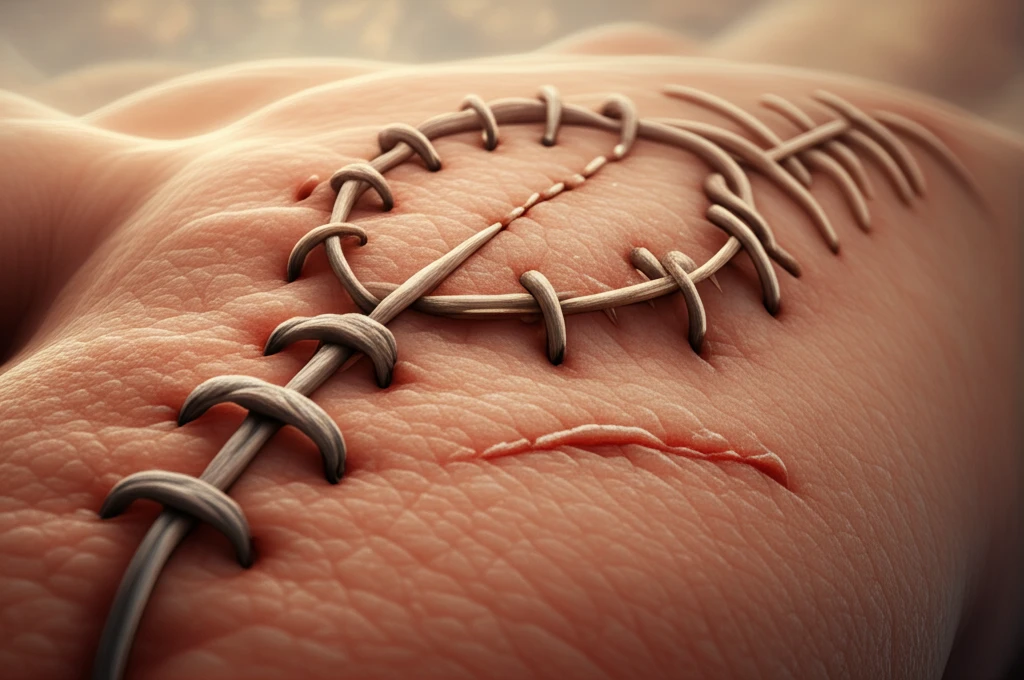
Stoma Closure Face-Off: Is Purse-String Suture the New Champ?
"Ditch the Linear Scar? A new study compares purse-string and traditional skin closure techniques for ileostomy reversal, revealing surprising insights into wound infection rates and cosmetic outcomes."
If you're facing ileostomy reversal, you're likely thinking about a smooth recovery and the best possible cosmetic outcome. Traditionally, surgeons have used a linear skin closure technique, resulting in a straight scar. But there's a growing interest in purse-string skin closure—a method that aims to minimize wound complications and leave a smaller, more discreet scar.
Wound infection is a common concern after ileostomy reversal, with rates varying widely. To combat this, the purse-string closure technique has emerged as an alternative. A recent study directly compared the effectiveness of linear versus purse-string skin closure in patients undergoing loop ileostomy reversal. This article breaks down the study's findings, offering clarity on which method might lead to fewer complications and better results.
This comprehensive guide examines the key aspects of both techniques, from surgical procedures to recovery times, empowering you with the knowledge to discuss the best options with your healthcare provider. We will explore the details of the study and discuss the potential benefits and drawbacks of each method.
Purse-String vs. Linear Closure: What the Study Reveals

A study published in the Journal of the Korean Society of Coloproctology compared wound infection rates and operative outcomes between linear and purse-string skin closures following loop ileostomy reversal. The researchers retrospectively analyzed 48 patients who underwent loop ileostomy reversal between December 2002 and October 2010. Thirty patients received linear skin closure (Group L), while 18 patients underwent purse-string closure (Group P).
- Linear Skin Closure (Group L): An elliptical incision was made around the stoma. After ileum mobilization and anastomosis, the rectus fascia was repaired with interrupted sutures. The skin was then closed using vertical mattress interrupted sutures, resulting in a traditional linear scar.
- Purse-String Skin Closure (Group P): A circumstomal incision was made around the ileostomy. The fascial closure was identical to the linear closure technique. However, instead of linear sutures, the circumstomal skin incision was approximated using a purse-string subcuticular suture (2-0 Polysorb), effectively drawing the skin together in a circular fashion.
The Verdict: Is Purse-String Closure Right for You?
The study suggests that purse-string skin closure after loop ileostomy reversal offers comparable outcomes in terms of wound infection rates compared to linear skin closure. While the study didn't find a statistically significant difference in wound infection rates, the shorter hospital stay associated with purse-string closure is a notable advantage. Moreover, the potential for a smaller, more aesthetically pleasing scar makes it an attractive option for many patients. While it is not significantly proven to be more effective in reducing the wound infection, purse-string skin closure could be a good alternative to the conventional linear closure.
